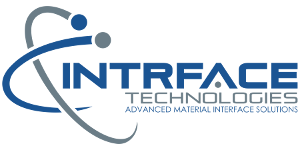Atmospheric plasma treatment of polymers is well documented but wide field of research. The following are just a few of the articles, papers and publications on atmospheric plasma treatment of polymers address key topics such as plasma materials processing, polymer surface treatments, polymer surface cleaning, polymer surface modification, polymer surface preparation prior to bonding, coating, printing and marking, atmospheric pressure plasmas, plasma density, breakdown voltage, non-equilibrium plasmas, thermal plasmas and gas temperature. The main reactions occurring on polymer surface in atmospheric plasma are etching, cleaning, crosslinking, grafting and other chemical reactions . These chemical reactions include the addition, substitution, formation of functional groups.
Contact us to receive a complimentary copy of atmospheric plasma treatment of polymers technical articles below. Please reference the authors and publication number in your email request (copy and paste into your email response).
- Thurston, R. M., Clay, J. D., and Schulte, M. D., “Effect of atmospheric plasma treatment on polymer surface energy and adhesion,” J. Plast. Film Sheeting. 23, 63 (2007). Abstract: This study describes experiments to quantify polymer surface energy changes after exposure to atmospheric plasma. Atmospheric plasma treatment permits surface functionalization at near-ambient temperatures. Polyethylene and polystyrene are treated with an atmospheric plasma unit. The increased surface energy and improved wetting characteristics lead to a significant adhesion improvement with adhesives that cannot be used without surface treatment.
- Ren, Y., Wang, C., and Qiu, Y. P., “Influence of aramid fiber moisture regain during atmospheric plasma treatment on aging of treatment effects on surface wettability and bonding strength to epoxy,” Appl. Surf. Sci. 253, 9283 (2007). Abstract: One of the main differences between a low-pressure plasma treatment and an atmospheric pressure plasma treatment is that in atmosphere, the substrate material may absorb significant amount of water which may potentially influence the plasma treatment effects. This paper investigates how the moisture absorbed by aramid fibers during the atmospheric pressure plasma treatment influences the aging behavior of the modified surfaces. Kevlar 49 fibers with different moisture regains (MR) (0.5, 3.5 and 5.5%, respectively) are treated with atmospheric pressure plasma jet (APPJ) with helium as the carrier gas and oxygen as the treatment gas. Surface wettability and chemical compositions, and interfacial shear strengths (IFSS) to epoxy for the aramid fibers in all groups are determined using water contact angle measurements, X-ray photoelectron spectroscopy (XPS), and micro-bond pull out tests, respectively. Immediately after the plasma treatment, the treated fibers have substantially lower water contact angles, higher surface oxygen and nitrogen contents, and larger IFSS to epoxy than those of the control group. At the end of 30 day aging period, the fibers treated with 5.5% moisture regain had a lower water contact angle and more polar groups on the fiber surface, leading to 75% improvement of IFSS over the control fibers, while those for the 0.5 and 3.5% moisture regain groups were only 30%.
- Wagner, A. J., Fairbrother, D. H., and Reniers, F. A., “Comparison of PE surfaces modified by plasma generated neutral nitrogen species and nitrogen Ions,” Plasmas and Polymers. 8, 2 (2003). Abstract: The surface modification of polyethylene (PE) by neutral nitrogen species (ground and excited state N2 as well as atomic N; modified nitrogen plasma treatment) has been compared to the effect of nitrogen ion bombardment using X-ray Photoelectron Spectroscopy (XPS) and contact angle measurements. XPS results indicate that a greater nitrogen concentration was grafted during the modified nitrogen plasma treatment of PE, an effect that was attributed to surface sputtering during ion beam modification. The distribution of nitrogen-containing functionalities was strongly dependent upon the treatment strategy; the modified nitrogen plasma treatment lead predominantly to imine groups being formed at the PE surface, while amine groups were the dominant species produced during ion beam modification. The presence of electron irradiation during the modified nitrogen plasma treatment of PE did not modify the rate of nitrogen incorporation or change the nature of N-containing functional groups produced but did lead to a systematic decrease in contact angle.
- Toshifuji, J., Katsumata, T., Takikawa, H., Sakakibara, T., and Shimizu, I., “Cold arc-plasma jet under atmospheric pressure for surface modification,” Surf. Coat. Technol. 171, 302 (2003). Abstract: A relatively cold arc-plasma jet under atmospheric pressure was developed using a pulse power supply, called a Plasma Energized (PEN)-Jet. A needle electrode was placed in a glass tube, and a cap electrode with a center-hole (3 mm diameter) was placed at the tube end. The electric arc was discharged between the electrodes by applying intermittent bipolar pulse power. By introducing dry air, nitrogen, or oxygen gas into the tube from the other end, the plasma gas of the arc was spewed out from the center-holed cap electrode, and a plasma jet was formed. The length and temperature of this plasma jet was measured as a function of pulse frequency (10–30 kHz). Both were found to increase with the increase in pulse frequency, not being very dependent on the type of gas under present experimental conditions. Maximum jet length was approximately 15 mm at 30 kHz, and maximum temperature at 5 mm from the cap electrode was 250 8C. Various metals and polymers were treated by PEN-Jet. The water contact-angle of these materials was found to decrease.
- Vandencasteele, N., Fairbrother, H., and Reniers, F. A., “Selected Effect of the Ions and the Neutrals in the Plasma Treatment of PTFE Surfaces: An OES-AFM-contact angle and XPS study,” Plasma Process. Polym. 2, 493 (2005). Abstract: Polytetrafluoroethylene (PTFE) surfaces were treated by oxygen and nitrogen species generated either in a remote (filtered) RF plasma or in an ion gun. In the first case, the majority of the species reaching the surface are neutral molecules, whereas in the second case, ions are the reactive agent. In this paper, we show that ions alone do not lead to a significant grafting of new functions on the PTFE surface. The XPS analysis of the treated surface show identical behaviour with oxygen and nitrogen ion treatment, and the evolution of the C1s peak shape suggest a progressive sputtering, leading to defluorination of the surface. The nitrogen plasma treatment lead to a subsequent grafting that is attributed mostly to the “excited neutrals”, but we suggest here that the ions could play a significant role in the activation process of the surface. The exposure of PTFE to an oxygen plasma lead to chemical etching of the surface, different from the physical sputtering induced by the ion treatment, that lead to a super-hydrophobic behavior of the surface attributed to an increase in the surface roughness.
- Zhu, L., Wang, C., and Qiu, Y. P., “Influence of the amount of absorbed moisture in nylon fibers on atmospheric pressure plasma processing,” Surf. Coat. Technol. 201, 7453 (2007). Abstract: During atmospheric pressure plasma treatment, the existence of moisture in the substrate material may have a potential influence on the treatment effect. In this study, nylon 6 fibers with three different moisture regains (1.23, 5.19 and 9.70%) were treated by atmospheric pressure plasma jet were investigated to improve the wettability and dyeing properties of fibers. The scanning electron microscope showed that at 9.70% moisture regain, the surface layer of the fibers was partially peeled off after plasma treatment. X-ray photoelectron spectroscopy analysis indicated that the plasma-treated fibers had higher oxygen concentration than the control fibers. In dynamic contact angle measurement, the advancing contact angles of all three treated groups decreased about 12°, while the groups with 5.19 and 9.70% moisture regains had lower receding contact angles than the group with 1.23% moisture regain. Using acid dye and dispersive dye, respectively, greater dye uptake was observed in treated fibers whereas the dye depths of the two dyes in nylon fibers were not affected by plasma treatment. The dyeability of the treated fibers with 1.23% moisture regain was a little better than that of the other two treated groups. In addition, no significant difference in single fiber tensile strength was found among control and treated fibers.
- Ren, Y., Wang, C., and Qiu, Y. P., “Aging of surface properties of ultra high modulus polyethylene fibers treated with He/O2 atmospheric pressure plasma jet,” Surf. Coat. Technol. 202, 2670 (2008). Abstract: To investigate the relationship between aging of the treatment effect and the gas composition of atmospheric pressure plasma treatment, ultra high modulus polyethylene (UHMPE) fibers were selected as a model fiber to study the aging behavior of fiber surface treated by atmospheric pressure plasma jet (APPJ) with pure helium, helium+1% oxygen, and helium+2% oxygen. Atomic force microscopy showed increased surface roughness, while X-ray photoelectron spectroscopy revealed increased oxygen contents after the plasma treatments. The plasma treated fibers had lower contact angles and higher interfacial shear strengths to epoxy than those of the control fiber. Adding 1% of O2 to helium increased effectiveness of the plasma in polymer surface modification and suppressed aging after the treatment, while adding 2% of O2 had a negative effect on the APPJ modification results and accelerated aging. In addition, no significant difference in single fiber tensile strength was observed between the control and the plasma treated fibers.
- Yun M. Chung, Min J. Jung, Min W. Lee, Jeon G. Han., “Surface modification effects on film growth with atmospheric AryArqO2 plasma,” Surface and Coatings Technology 174 –175 (2003) 1038–1042. Abstract: Commercial, purified PVC films were surface-modified by Ar and mixed Arq O2 RF plasma at atmospheric pressure. The change of surface properties was monitored by contact angle measurements. Both modifications cause surface oxidation of PVC films, which is connected with the formation of functional groups enhancing polymer wettability. This process is very fast and efficient in mixed ArqO2 RF plasma but relatively slower during PVC exposure to Ar. The interface reactions of sputtered Ti with PVC have been studied using high resolution X-ray diffractometer and X-ray photoelectron spectroscopy. The reactions of Ti with PVC lead to the simultaneous formation of TiCl2, TiC and Ti-oxide.
Contact us to receive a complimentary copy of atmospheric plasma treatment of polymers technical articles above. Please reference the authors and publication number in your email request (copy and paste into your email response).

